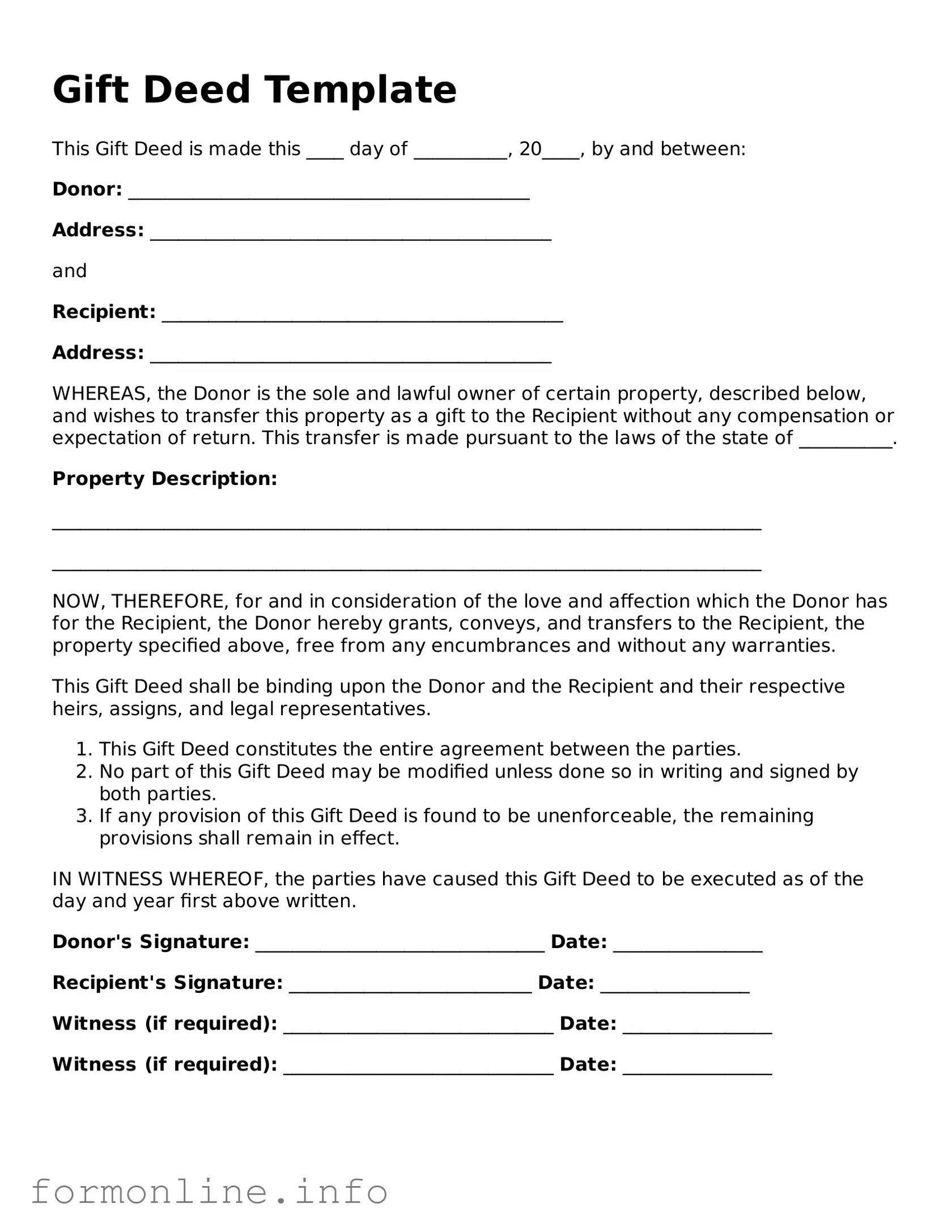Gift Deed Template
This Gift Deed is made this ____ day of __________, 20____, by and between:
Donor: ___________________________________________
Address: ___________________________________________
and
Recipient: ___________________________________________
Address: ___________________________________________
WHEREAS, the Donor is the sole and lawful owner of certain property, described below, and wishes to transfer this property as a gift to the Recipient without any compensation or expectation of return. This transfer is made pursuant to the laws of the state of __________.
Property Description:
____________________________________________________________________________
____________________________________________________________________________
NOW, THEREFORE, for and in consideration of the love and affection which the Donor has for the Recipient, the Donor hereby grants, conveys, and transfers to the Recipient, the property specified above, free from any encumbrances and without any warranties.
This Gift Deed shall be binding upon the Donor and the Recipient and their respective heirs, assigns, and legal representatives.
- This Gift Deed constitutes the entire agreement between the parties.
- No part of this Gift Deed may be modified unless done so in writing and signed by both parties.
- If any provision of this Gift Deed is found to be unenforceable, the remaining provisions shall remain in effect.
IN WITNESS WHEREOF, the parties have caused this Gift Deed to be executed as of the day and year first above written.
Donor's Signature: _______________________________ Date: ________________
Recipient's Signature: __________________________ Date: ________________
Witness (if required): _____________________________ Date: ________________
Witness (if required): _____________________________ Date: ________________
